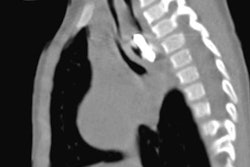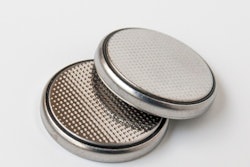
Parents may be horrified when their young child swallows a coin that isn't the chocolate kind. But a recent case report described how point-of-care ultrasound (POCUS) was used to detect a metal coin that a 3-year-old boy had swallowed.
A team led by Dr. Jake McRae from the University of Texas used POCUS to identify the coin, "consistent with a nickel," without harm. Their results published December 15 in the Visual Journal of Emergency Medicine.
"The patient was discharged home with outpatient follow-up and strict return precautions and home care instructions," McRae and colleagues said.
Children ages three and under are naturally curious and explore the world in their own sensory ways. Unfortunately, this also means not knowing instinctively which objects are food and which are not. A 2019 study led by Harvard University researchers estimates that 20% of children at or below this age swallow a nonfood item at some point in their young lives.
POCUS has been touted in recent years for its portability, ease of use, and cost-effectiveness. The technology can be used at bedside or even outside of clinical settings. While the verdict is out when it comes to clinical benefits and standardization, that isn't stopping the enthusiasm for the technology expressed by physicians across the U.S.
McRae et al said the toddler's mother took the child to the emergency department after reporting he may have ingested the coin after briefly leaving a room in their home. The child, however, had no visible symptoms such as difficulty breathing or digestive issues.
"Abdominal exam demonstrated a soft, non-distended and non-tender abdomen with no palpable mass, no guarding or rebound tenderness and normoactive bowel sounds," the study authors wrote.
POCUS was used at the bedside and revealed a 2.07-cm hyperechoic object in the lower stomach area. At the time of ultrasound, a chest x-ray also revealed a round, metallic object consistent with an ingested coin also in the lower stomach area.
The child was discharged home with outpatient follow-up, return precautions, and home care instructions. The child's mother said she had not yet identified the coin in the patient's diaper three days after the exam but that the child was doing well, and they were scheduled for follow-up.
The researchers also looked at hypothetical situations like the case report. They said urgent endoscopy with object removal should be done for pediatric patients who swallow small batteries but otherwise present with stable conditions. They also said that reverberation ultrasound artifacts are commonly seen after coin ingestion, since such objects have high resistance or reflective interface for ultrasound beams.




















